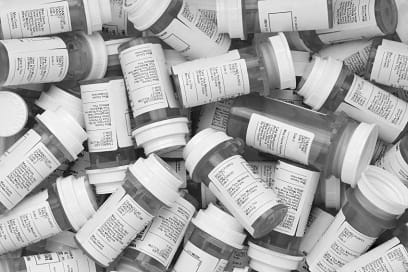Prescription painkillers have been a growing problem in the United States for years. Because they are controlled, but legal, painkillers are viewed as safer than street drugs by too many people. The result is more addictions, more overdoses, and more deaths caused by medications like oxycodone, hydrocodone, and others. According to recent information released by the Centers for Disease Control and Prevention (CDC), record numbers of people, especially women, are abusing and dying from prescription painkillers. The Painkillers and Addiction The prescription painkillers that are killing American women are narcotics derived from the opium poppy. The substance from the flower, called opium, that contains active compounds has been used for thousands of years as medication and as a way to get high. The natural compounds, as well as those derived from them, act in your nervous system on certain receptors. The result is a feeling of pleasure and a decrease in pain. Opioids are powerful painkillers and have helped many people by reducing suffering from chronic and acute pain. The problem with opioids is that they are highly addictive. Those who use them often begin to abuse them to get the high that comes along with the pain relief. Over time, such abuse can lead to addiction as the drug changes pleasure pathways in the brain. If you abuse these drugs to get a high, you will find that you need more and more to get that high. Eventually, dependence sets in and you need to take the drug just to feel normal again. The Statistics The latest statistics regarding the abuse of prescription painkillers, and the number of overdoses occurring, are troubling. The CDC reports that between 1999 and 2010, nearly 48,000 women died from an overdose of prescription painkillers. The number of overdose deaths during that time period represents a 400 percent increase. Compared to the increase in deaths of men for the same reason, 265 percent, the number is staggering. Overdose deaths are not the only statistics addressed in the CDC report. They also show that even more women are going to the emergency room for abusing painkillers. For every woman dying of an overdose, 30 end up in the emergency room. The women most likely to die from an overdose are those between the ages of 45 and 54, while women from 25 to 54 are most likely to receive emergency treatment. The Causes According to the CDC, men are still more likely to die from a prescription painkiller overdose than women. However, with the huge increases, women are closing the gap quickly. There are many possible reasons that women are abusing these drugs in greater numbers. One is that women are more likely to have problems with chronic pain, and therefore, to be prescribed a narcotic painkiller. They also tend to use them for longer periods of time. The CDC also finds that women become dependent on these drugs more quickly, and that they tend to shop around and get multiple prescriptions. How to Make Changes While the CDC states that overdose deaths have already reached epidemic proportions, there are ways to stop and reduce the deaths. The tide can be turned on women dying due to painkillers. Doctors need to be more careful when prescribing painkillers and should be monitoring patients for signs of abuse. The government, both at the state and federal level, could also do more. Better access to good addiction treatment could go a long way toward helping women beat their dependencies. The government could also better regulate prescription painkillers and monitor doctors who overprescribe them There are also things that you can do personally to make a difference. Discuss all medications with your doctor and be sure you understand the risks and how to take them correctly; always follow your doctor’s instructions. If you are prescribed painkillers, keep them stored in a secure place and never share them with anyone else. Step in if you suspect someone is abusing painkillers—don’t just ignore her problem—do whatever you can to help her get help. Being responsible as an individual and helping others can make all the difference in the world.

